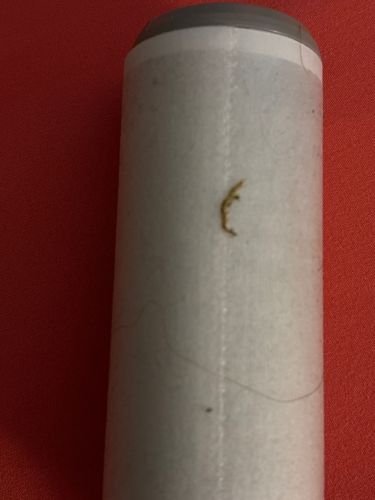Case-bearing Clothes Moth (Larva)
Scientific Name: Tinea pellionella
Order & Family: Lepidoptera, Tineidae
Size: Larvae typically measure 10-15 mm (0.4-0.6 inches) in length; adult moths have a wingspan of 9-16 mm (0.35-0.63 inches).

Natural Habitat
Indoors, especially in closets, attics, storage areas, and undisturbed places where natural fibers are stored. They thrive in dark, humid environments.
Diet & Feeding
Natural fibers, particularly wool, fur, feathers, silk, and sometimes cotton or synthetic blends if soiled with natural materials. They also feed on lint, dust, and pet hair.
Behavior Patterns
Case-bearing clothes moth larvae build and carry a silk case with them, incorporating bits of their food source into it for camouflage. They are relatively slow-moving and prefer undisturbed, dark areas. Adult moths are typically poor fliers and avoid light.
Risks & Benefits
Potential Risk: Significant pest of textiles, causing damage to clothing, carpets, upholstery, and stored natural fiber items. No direct benefit to humans or ecosystems in an indoor setting. They are often indicators of hidden infestation.
Identified on: 9/3/2025